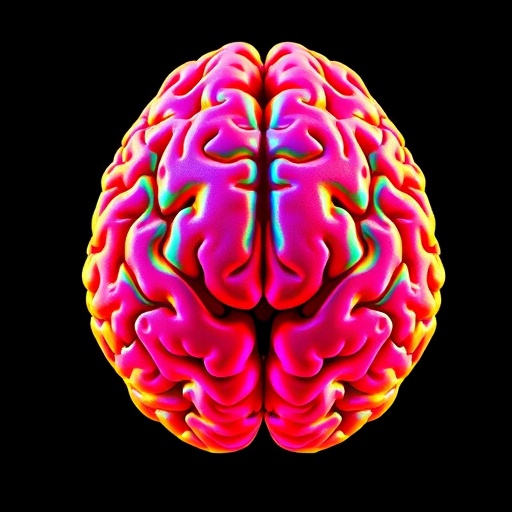In an unprecedented leap forward for the study of human brain architecture, researchers have unveiled a groundbreaking methodology that promises to transform the exploration of white matter connections. This innovative approach, dubbed brain dissection photogrammetry, heralds a new era in neuroanatomical investigation by seamlessly integrating ex vivo and in vivo multimodal datasets. The implications of this technique reach far beyond traditional imaging, opening avenues for a more detailed, high-fidelity mapping of the intricate white matter pathways that underpin cognitive and neurological function.
Understanding the labyrinthine network of white matter fibers has long posed a formidable challenge to neuroscientists. These fiber tracts form the communication highways within the brain, linking disparate cortical and subcortical regions responsible for sensory processing, motor control, and higher-order cognition. Historically, dissecting and visualizing these pathways required painstaking manual labor and often suffered from limitations in resolution and three-dimensional contextualization. Current in vivo imaging techniques like diffusion MRI offer valuable insight but lack the precision to fully capture the microstructural nuances of these fiber networks.
The newly developed brain dissection photogrammetry technique leverages the power of high-resolution photographic imaging combined with computational reconstruction to meticulously document brain dissections. By capturing exhaustive sequences of photographs during controlled anatomical dissections, this method produces high-fidelity, three-dimensional digital models of the white matter architecture. The capacity to visualize these internal structures in three dimensions at such refined detail is unprecedented and provides an indispensable complement to existing neuroimaging modalities.
A crucial strength of this approach lies in its integration of ex vivo data—derived from dissected human brain specimens—with in vivo multimodal datasets gathered from living subjects. By aligning and co-registering these distinct data sources, scientists can cross-validate and enrich in vivo imaging with the unparalleled anatomical precision offered by ex vivo observations. This fusion bridges the gap between detailed anatomical knowledge and functional imaging data, offering a holistic perspective required for advancing both basic neuroscience and clinical applications.
The photogrammetry workflow is remarkable not only for its resolution but also for its scalability and reproducibility. Unlike prior dissection studies that relied heavily on operator skill and subjective interpretation, this automated photographic mapping provides objective, quantifiable data that can be shared and reanalyzed across research groups. This standardization is poised to accelerate collaborative efforts to build comprehensive digital atlases of white matter connectivity.
Beyond the technical innovations, this work sheds new light on the complex organization of fiber systems responsible for essential brain functions. Enhanced visualization capabilities will allow researchers to untangle densely packed fiber bundles previously obscured in traditional microscopy or diffusion imaging. Such insights deepen understanding of the brain’s wiring diagram and may elucidate how alterations in white matter integrity contribute to neurological disorders like multiple sclerosis, stroke, and psychiatric conditions.
The ability to simultaneously study ex vivo and in vivo datasets also holds significant promise for translational neuroscience. For example, the framework could be applied to refine non-invasive imaging biomarkers by correlating them with gold-standard anatomical data. This advancement would improve diagnostic accuracy and treatment monitoring in clinical settings, where precise characterization of white matter pathology is critical for patient management.
The interdisciplinary team behind this innovation comprises neuroanatomists, imaging scientists, and computational experts working synergistically to optimize each stage of the pipeline—from dissection protocols to advanced image processing algorithms. This collaboration exemplifies the convergence of biology and technology necessary to push the boundaries of brain research.
Furthermore, the open-access release of these digital brain models is expected to galvanize the scientific community by providing a rich resource for education, hypothesis generation, and validation of computational models of brain connectivity. Students, clinicians, and researchers alike will benefit from unprecedented access to intricately detailed, anatomically accurate representations of human white matter.
This approach also paves the way for future enhancements, such as integrating microscopic data from histological staining or linking structural information with functional activity patterns. These multimodal integrations may eventually lead to comprehensive brain atlases that incorporate anatomical, molecular, and physiological dimensions.
Despite these compelling advantages, the method does present challenges that researchers are actively addressing. Ensuring the fidelity of three-dimensional reconstructions depends on meticulous image acquisition and precise alignment algorithms. Additionally, bridging the spatial resolutions between ex vivo photogrammetry and lower resolution in vivo imaging remains a complex task. Nonetheless, ongoing methodological refinements continue to bolster the robustness and applicability of the technique.
In summary, brain dissection photogrammetry represents a landmark advance in neuroimaging and neuroanatomy. Its ability to integrate detailed ex vivo dissections with in vivo multimodal data offers a profound new window into the human brain’s connectivity landscape. This powerful tool is set to accelerate discoveries in neuroscience, enhance clinical diagnostics, and nurture an enriched understanding of the cerebral white matter that underlies human thought and behavior.
As neuroscientists worldwide adopt and further refine this technology, we anticipate a cascade of novel findings that will illuminate both normal brain function and the substrate of neurological diseases. The future of brain mapping has dawned with remarkable clarity, propelled by this fusion of photographic precision and computational innovation.
Ultimately, brain dissection photogrammetry not only revitalizes and modernizes classical anatomical dissection but also transcends it by embedding the traditional expertise into a digital realm that integrates seamlessly with contemporary imaging technologies. Through this synergy, our grasp of the human brain’s intricate wiring is poised for unparalleled refinement, heralding transformative insights in the decades to come.
Subject of Research: Neuroanatomy; Human brain white matter connectivity; Multimodal brain imaging integration
Article Title: Brain dissection photogrammetry: a tool for studying human white matter connections integrating ex vivo and in vivo multimodal datasets
Article References:
Vavassori, L., Rheault, F., Nocerino, E. et al. Brain dissection photogrammetry: a tool for studying human white matter connections integrating ex vivo and in vivo multimodal datasets. Nat Commun 16, 9801 (2025). https://doi.org/10.1038/s41467-025-64788-y
Image Credits: AI Generated
DOI: https://doi.org/10.1038/s41467-025-64788-y




